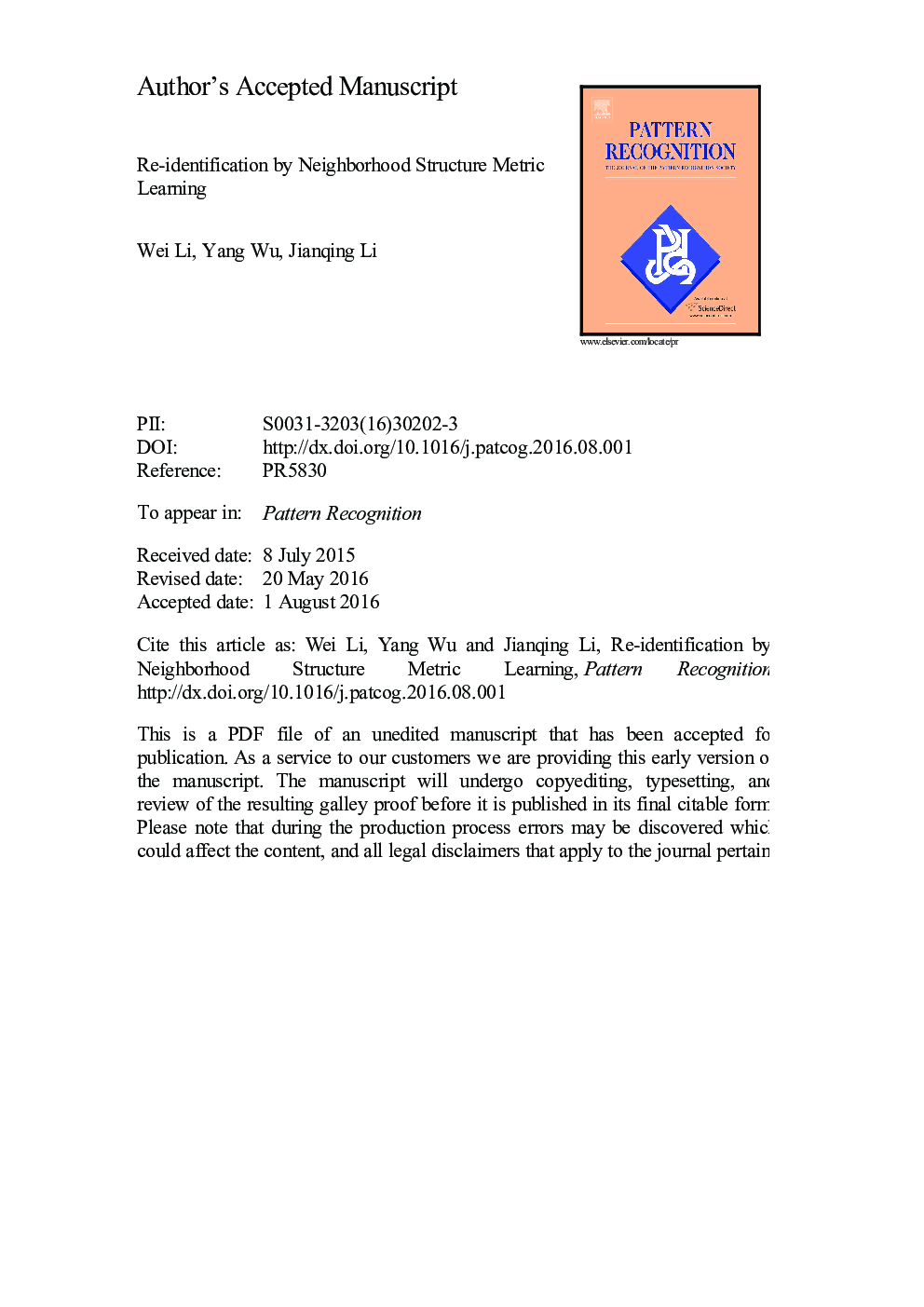| Article ID | Journal | Published Year | Pages | File Type |
|---|---|---|---|---|
| 6939791 | Pattern Recognition | 2017 | 37 Pages |
Abstract
Re-identifying persons of interest among distributed cameras remains a challenge in current academia and industry. Because feature designing is inevitably subject to handcrafting subjectivity and real-scenario complexity, learning a discriminative metric has gained increasing attention to date. Although metric learning has achieved inspiring results, the research progress seems to slow down far before the performance is satisfactory. The difficulty mainly comes from the variability and sparsity of human image data, which impairs traditional metric learning models based on point-wise dissimilarity. In consideration of the neighborhood structure manifold which exploits the relative relationship between the concerned samples and their neighbors in the feature space, we propose a novel method, “Neighborhood Structure Metric Learning”, to learn discriminative dissimilarities on such manifold by adapting the codomain metrics of its charts. Experiments on widely-used benchmarks have demonstrated the advantage of this method in terms of effectiveness, robustness, efficiency, stability, and generalizability.
Keywords
Related Topics
Physical Sciences and Engineering
Computer Science
Computer Vision and Pattern Recognition
Authors
Wei Li, Yang Wu, Jianqing Li,
